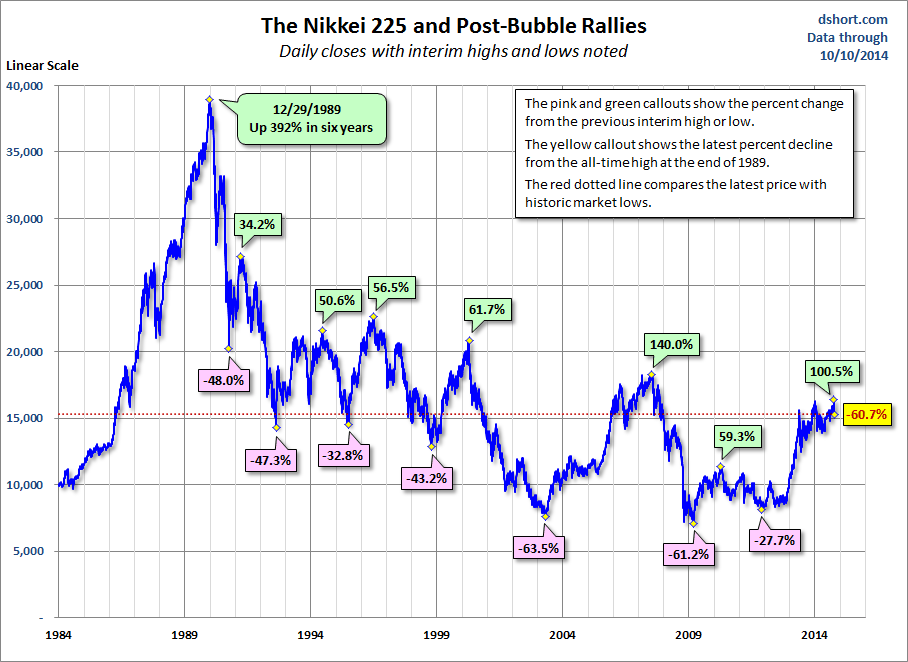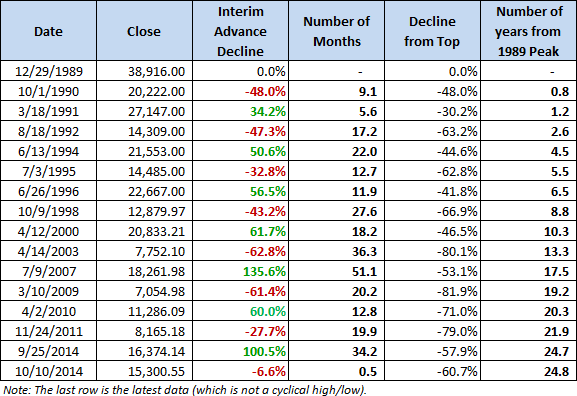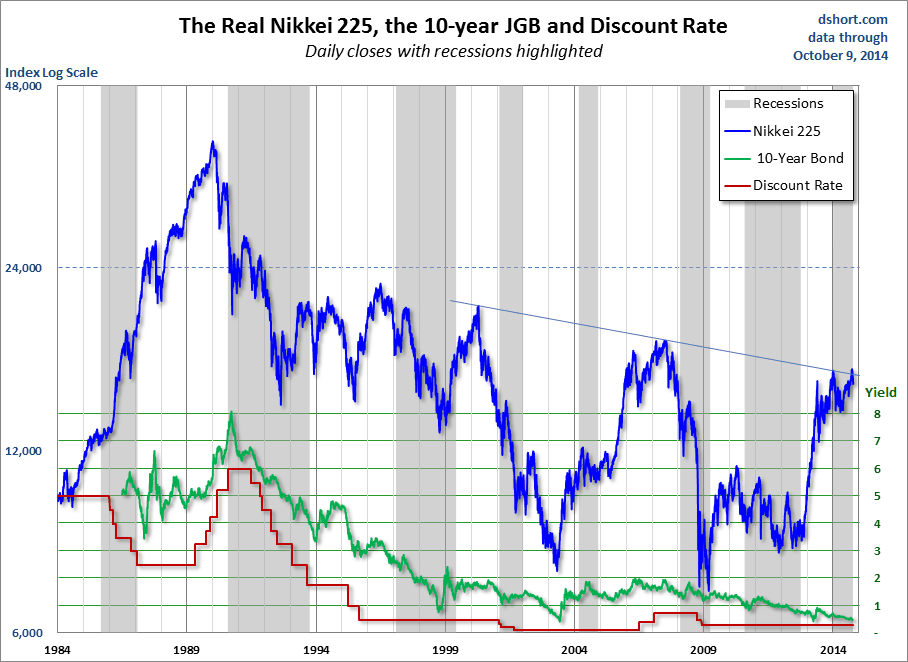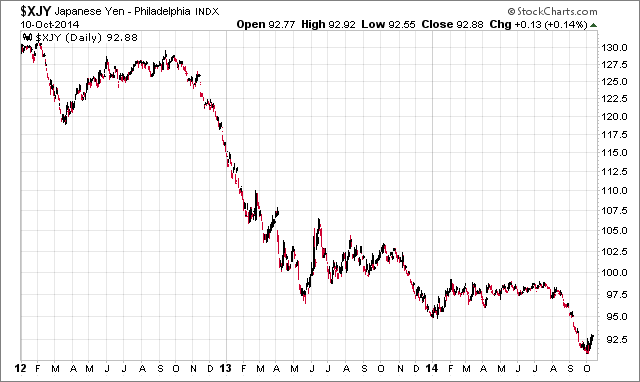It's been quite a while since my last look at secular Japanese market and bond data. We're now just a few months from the 25th anniversary of the Nikkei 225's bubble top in 1989. The latest cyclical rally in the index hit an interim high at the end of December 2013, up 99.6% from its interim low in November of 2011, and a more recent interim high in late September was up 100.5% from that 2011 low. The steroid effect of massive monetary intervention has evolved into an ongoing drama of volatility.
What about Japanese government bonds? The closing yield of the 10-Year bond on the day the Nikkei hit its 2011 interim low was 1.53%. It was cut in half to 0.75% a year later when the Nikkei hit its November 2012 low shortly before the central-bank-driven rally. The yield fell to its 2013 low of 0.44% on April 4, the day that the Bank of Japan disclosed its radical redo of monetary policy. It rebounded to 0.94% on May 29, but it has since been nearly halved to 0.50%. Compare that with the US 10-Year note, which closed Friday at 2.31%.
The Nikkei in Historical Perspective
Here's a quick review of the Nikkei 225, the 10-year bond and inflation over the past three decades.

The table below documents the advances and declines and the elapsed time for the major cycles in the Nikkei.

The Nominal versus Real Nikkei 225
For most major indexes, we expect to see a significant difference between the nominal and real price over a multi-decade timeframe. But Japan's chronic bouts of deflation have kept the two metrics rather tight. Note that I've used a log vertical axis for the index price to better illustrate the relative price changes over time.

Japanese Bond Yields: How Low Can They Go?
Government bond yields in many safe-haven countries have plunged since the Financial Crisis. The US 10-year, now at its 2014 low at 2.31 percent, is well off its historic closing low of 1.43 percent set in July 2012. The lesson from Japan is that the trend toward lower yields can last a very long time. Here is an overlay of the nominal Nikkei (log vertical axis) and the 10-year bond (linear scale) along with Japan's official discount rate. The 10-year yield hit its all-time low in June of 2003, over 11 years ago, at 0.43%. According to Bloomberg, it closed yesterday at 0.50%. Note: I couldn't resist adding a trend line on the index price, which fractionally broke above trend briefly at the end of September.

And here is a closer look at the 10-year yield over time with a log vertical axis to give a better sense of the relative change.

I mentioned that 10-year record low of 0.43%. When the latest round of BOJ easing was officially announced on April 4th of 2013, the yield closed that day at 0.44%.
The consensus view of the Nikkei's rally since November 2012, and certainly one that I share, is that it was essentially a result of the market's response to rumors and news of the BOJ's plan for the latest easing of last resort months before its implementation, with the falling Yen as the key driver.

Now check out the inverse correlation between the currency and the equity index over the past three years.

What we've seen in Japan is an amazing chapter in the ongoing drama of economics and the market -- a drama that no doubt has more in store for us.
Note: The "recessions" highlighted in the third chart above are based on the OECD Composite Leading Indicators Reference Turning Points and Component Series. I use the peak-to-trough version of data (peak month begins the gray, trough month is excluded), which is conveniently available in the FRED repository. As we can readily see, the OECD concept of turning points is much broader than the method used by the NBER to define recessions in the US
